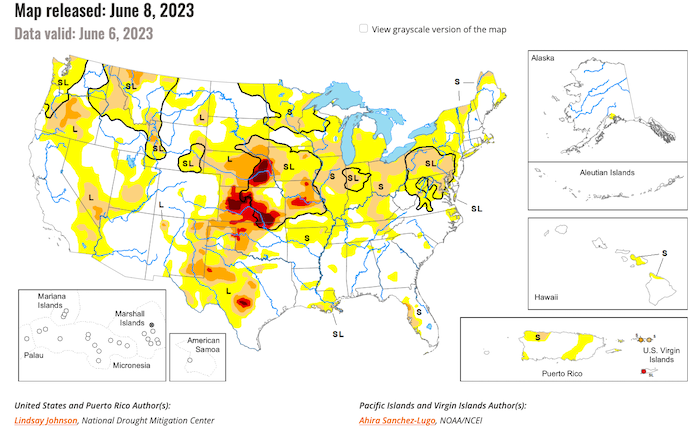Much of the U.S. is experiencing abnormally dry conditions, and many areas of the Corn Belt and Plains states are in moderate or worse drought as of June 6. No-till helps retain soil moisture in dry years, which translates to healthier crops throughout the growing season and better yield prospects. Cover crops can also help manage moisture, but termination timing matters. Check out these articles from past instances of drought and the insight that followed.
Using No-Till During Drought
- No-tillers who abandoned corn acres in the U.S. this year due to the historic drought could turn a negative into a positive by planting cover crops on those fields.
- No-till is often credited with increasing organic matter in the soil, therefore helping improve moisture retention in dry years.
- While no-till certainly wasn’t a cure-all for a severe lack of summer moisture, many no-tillers saw numerous profit-building benefits to this system in a limited-rainfall situation.
- A large portion of the mobile nutrients that were not taken up by the 2011 crop in drought affected areas are likely to remain in the top 1-2 feet of soil. With the low rainfall in most of the southern and central Great Plains, very little of the nitrogen (N) will have been lost.
- Soybeans are susceptible to yield loss from water deficit and drought stress at two key developmental stages, germination and reproduction-seed development.
- Soil mineralization of N will have been quite low in rainfed fields due to low moisture.
- In areas where droughts are common, though, can earthworms survive? This study suggests that they can.
- While we hope more rain is on the way this summer, here are some considerations for harvesting drought-stressed corn if the drought persists.
Cover Crops & Drought
Incorporating cover crops can improve soil moisture retention and reduce water loss. The dense vegetation of cover crops acts as a physical barrier, reducing evaporation and shading the soil, thereby reducing moisture loss from the surface. Read these articles from Cover Crop Strategies about using cover crops to fight the effects of drought:
- A success story in Lovelock, Nev., where several years of drought plagued the area but cover crops were the answer for some farmers.
- The risks of seeding a cover crop in a drought are dry soil conditions mean cover crops may not germinate until rainfall is received, or they may germinate but run out of moisture and die.
- In a drought year, it’s important to remember that overwintering cover crops use water as they put on new growth in the spring. If soil moisture levels drop too low, it can negatively affect the cash crop following the cover crop.
- Whether your farm is dealing with drought right now, it will be something you’ll encounter in the future. So, how do cover crops fit into navigating periods of drought?
- Due to increased snow trapping, increased water infiltration and higher soil organic matter, cover crops are at least neutral to positive on overall soil moisture.
- Cereal rye is particularly effective for scavenging residual N and cycling it through plant biomass.
- Herbicides degrade based on soil temperature, rainfall, time of application, organic matter, soil type, soil pH and sunlight.
- Sara Bauder, field agronomist with South Dakota State University Extension, talks with Jack Davis, crop economics specialist with SDSU, and Dan Forgey, the No-Till Innovator from Gettysburg, S.D., about the economic benefits of utilizing drought-stressed crops as forage for livestock.
- Plants growing in soils rich with mycorrhizae can take advantage of the fungi to help them obtain nutrients from the soil.
To check the areas most affected by drought, utilize this website for up-to-date images.







Post a comment
Report Abusive Comment